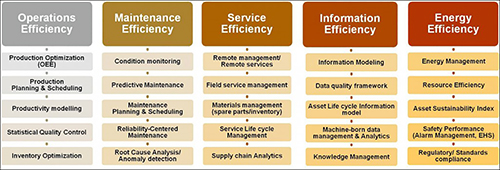Aug 27, 2015An airplane's landing gear is, obviously, a rather vital subsystem. Any failure it sustains means a delayed departure at best, and a very perilous takeoff or landing at worst. Landing gear is also the asset of record in the latest testbed of the Industrial Internet Consortium (IIC), a member-led organization that is helping to accelerate the deployment of networked sensor-based technology (the Internet of Things) in the industrial sector.
Earlier this year, the IIC, whose founding members include AT&T, Cisco, General Electric, Intel and IBM, launched the testbed program. The consortium relies on the participation of hardware and software vendors to evaluate and share standards-based open architectures for collecting, distributing and analyzing data collected via sensor networks in a way that can be applied to a wide range of business processes across industries. Thus far, its testbeds cover topics ranging from creating an architecture for control systems and data analytics used to manage microgrids to industrial track and trace to condition monitoring.
Landing gear is the focus of the next testbed that the IIC announced this week, but the same approach could be applied to other assets as well. The lead commercial partner is global system integration firm Infosys, with Bosch, Intel, and PTC supporting the effort. The goal is to create a reference architecture—using landing gear as a use case—for improving asset efficiency based on sensory data and machine-to-machine (M2M) systems.
Asset efficiency refers to reducing waste and improving the maintenance and uptime of any industrial asset, and it references efficiency in five different tenants, says Jayraj Nair, the head of Infosys' IOT Practice. These are efficiency in operations, maintenance, service, information and energy. (See the graphic below for a breakdown of specific processes that fall under each of these categories.)
Early this year, Infosys conducted a study with the Institute for Industrial Management (RIF) at Aachen University that showed a majority—85 percent—of surveyed industrial and process manufacturing companies in China, France, Germany, the United Kingdom and the United States believe that they could benefit from improving asset efficiency. Yet, only 15 percent have implemented programs to do so. Most of the surveyed companies also say they want to deploy asset-efficiency programs by 2020, Nair reports.
The study showed a great need for roadmaps for deploying asset-efficiency programs, said Richard Soley, the IIC's executive director, in a recent blog post: "With equipment and system processes becoming intelligent, virtually every activity in the industrial enterprise—say an aircraft, factory, or oil field—generates data. If that data is monitored and turned into meaningful insights, it gives maintenance engineers the opportunity to accurately anticipate and correct failures. That's a powerful opportunity to maximize performance, conserve energy, reduce waste, improve quality and grow profits. And yes, sometimes even save lives."
Testbeds like those that the IIC is supporting are a "really interesting way to bring together a partner ecosystem," Nair says. "The IIC became our vehicle of choice for this project because they have a good footprint, and a good implementation process—it's not just about sitting around in a boardroom talking about possibilities. They get out there and do it."
For the landing gear testbed, Bosch will provide sensors attached to the gear, and will manage the data culled from these devices using its IoT Suite software and middleware from Bosch-owned ProSyst. Intel is providing its IoT gateway for sensor data aggregation, while Infosys will provide its analytics software, the Infosys Information Platform (IIP), to perform data analytics. Nair notes that Infosys also brings strong "domain-level knowledge" and experience working with clients in the aerospace industry. PTC's Thingworx Application Enablement Platform (AEP) will serve as an end user's interface, whereby the processed sensory data is served up via dashboards and easily consumed datasets that will inform decision-making in order to improve asset maintenance and decrease the likelihood of asset failures.
Data from the sensors will be collected by the Intel gateways and then be forwarded to the ProSyst middleware. From there, it will be sent through the IIP analytics software before being transmitted to Thingworx's AEP, where the end user will consume the data in order to meet one of the specific asset-efficiency objectives, such as predictive maintenance or building an asset lifecycle information model.
The same approach being developed for landing gear asset efficiency could also be employed for, say, a generator, a turbine, a locomotive engine or any valuable, mission-critical industrial asset, Nair stresses.
In addition, he says, end users are all at different places in the journey toward instrumenting these types of assets with the quantity or quality of sensors required to support the asset efficiency model on which the testbed is based. Yet, he adds, companies can use the asset efficiency model that the testbed lays out even if they are early in the process of applying M2M systems to improve business processes and increase the utilization and uptime of their industrial assets.
The key to the IIC approach, Nair adds, is that it be modular in nature. "The stack we've created for the testbed is loosely integrated," he states. "It's not exactly plug-and-play, but you should be able to take any one of the [software or hardware] layers and put another one in. That's the fun of IIC [testbeds]."

